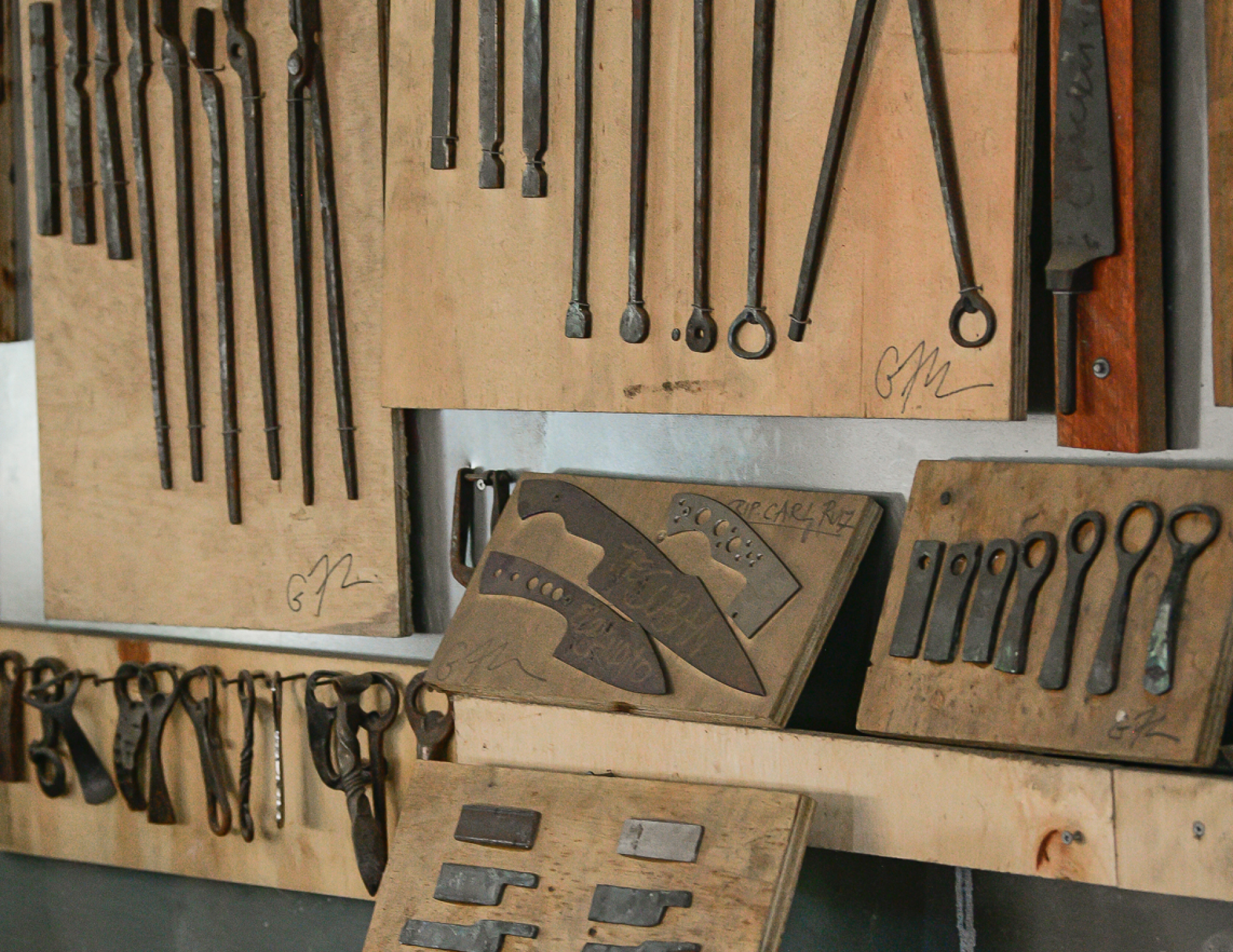
About
Our Process
Every Feder Knife is a one-of-a-kind hand crafted masterpiece.
From the crafting method and steel selection, to the blade profile and handle materials. Every detail is chosen with care.
This dedication to personalization ensures each blade is a unique heirloom built to last for generations.
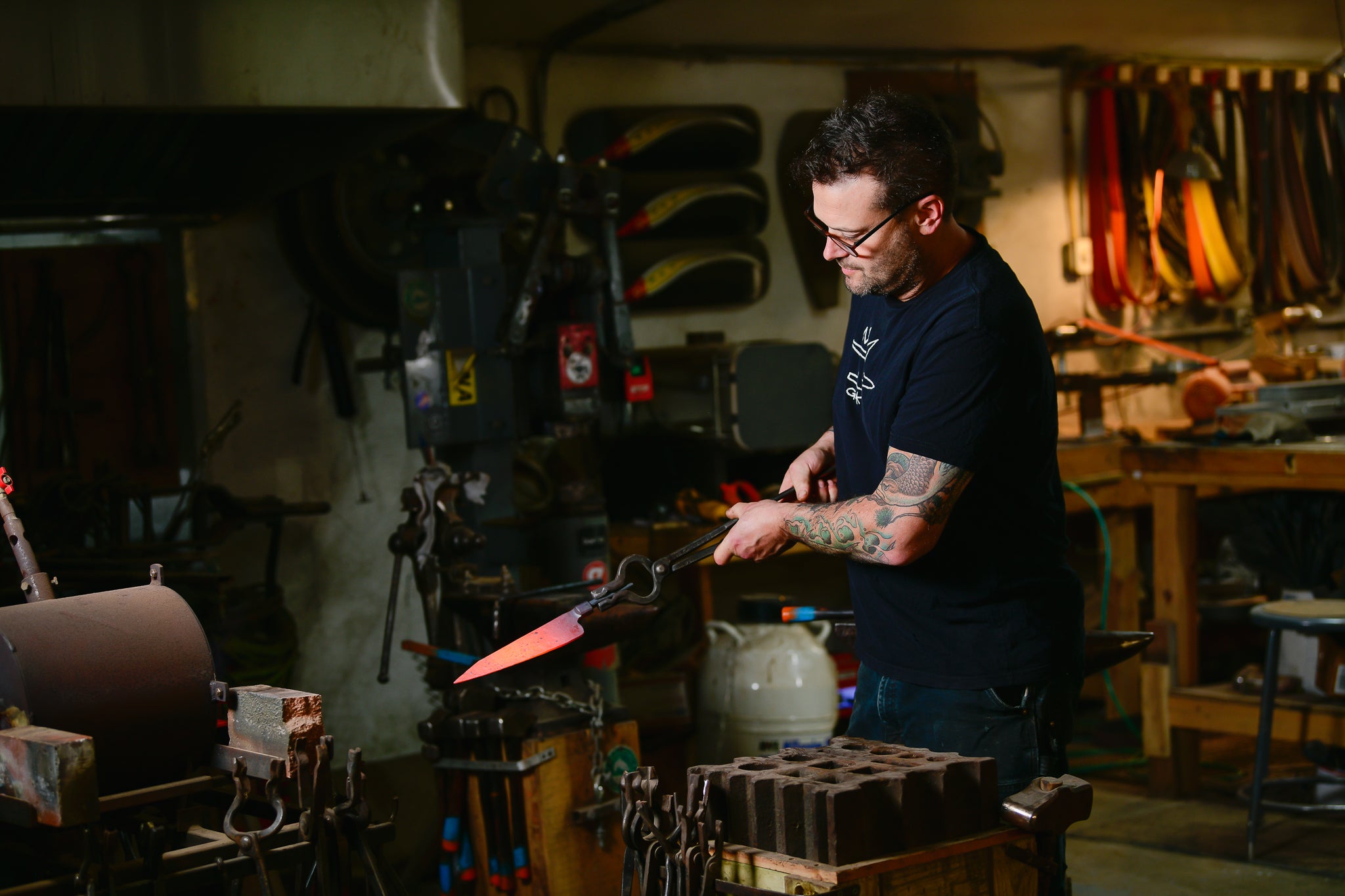
Geoff Feder
“When I was making sculpture out of steel, the dilemma I always arrived at is how do you bring something to life using heavy permanent material. I found myself using birds as a subject matter; using gesture and the illusion of lightness to juxtapose the weight of the material. Directionality of the piece would help the eye move forward giving the viewer the sense of movement.”
Our knives are made in three ways
The Method
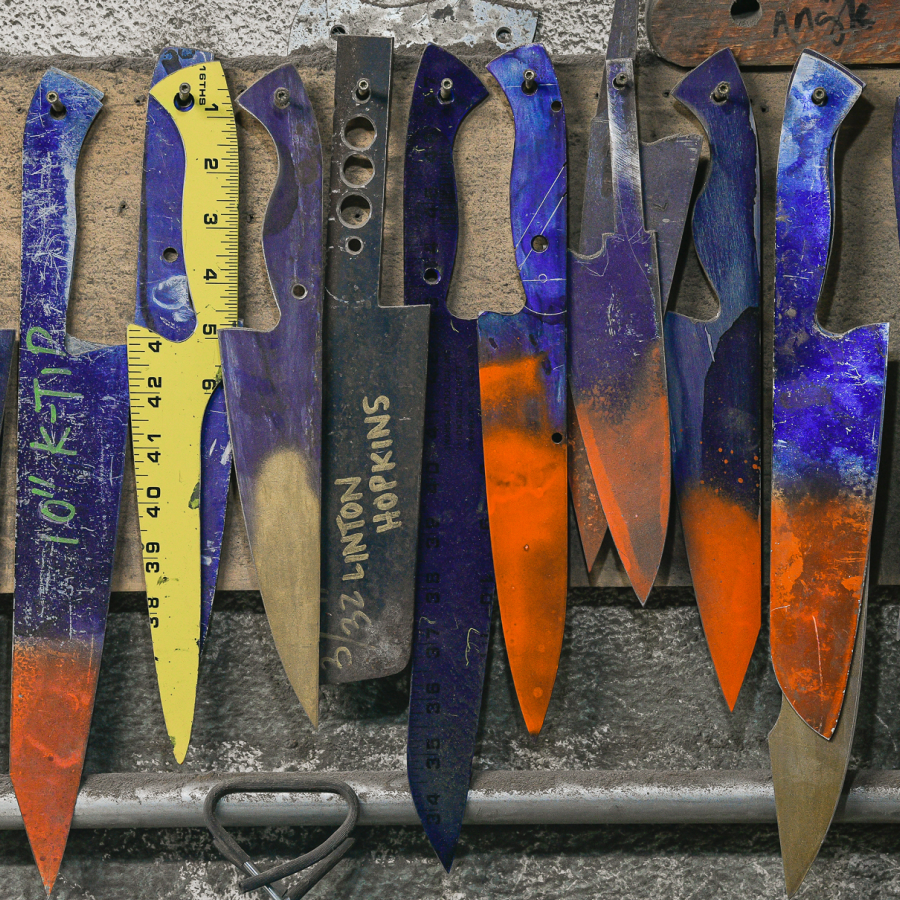
Templated Design
We develop a design and profile of a knife by first drawing a blueprint of it. We then trace a pattern on a stick of steel and cut out using band saw. We then heat treat the steel grind to the proper profile. Here we use either stainless steel or high carbon steel to make either a full tang or hidden tang style knife.
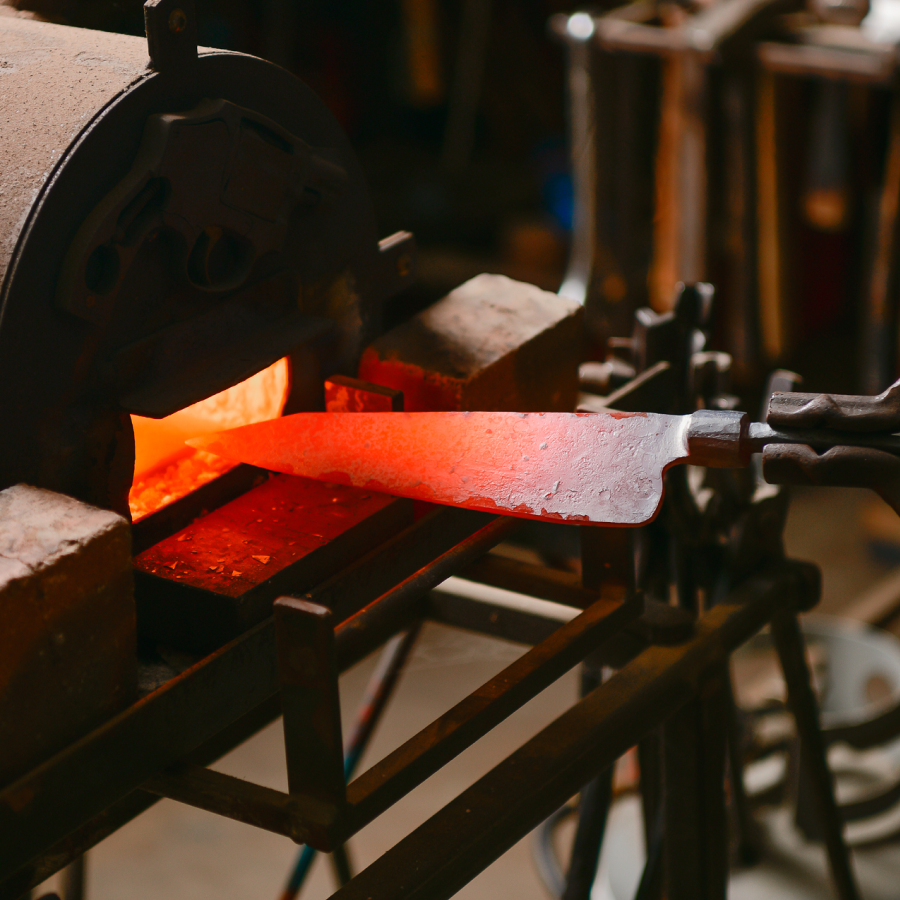
Hand Forged
“Forging” is literally the process of ‘moving’ metal - as opposed to removing it by sawing, drilling or grinding as in the stock removal process. Hand hammered carbon steel is used to create the profile of the knife. Both full and hidden tang knifes are available utilizing this technique as well as and integral style knives.
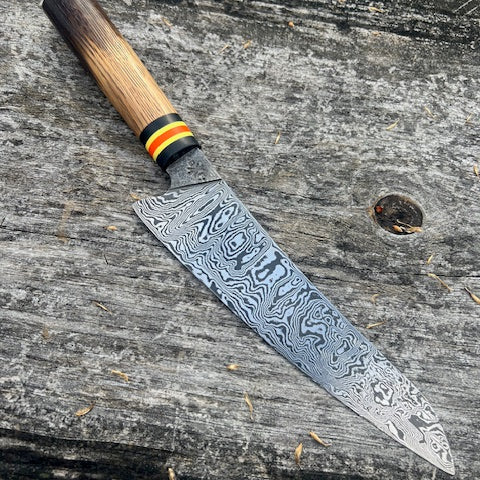
Damascus
High carbon and high nickel steels are forged welded together to create dynamic patterns by folding and twisting the metals together. At the end of the knife making process the knife is dipped into ferric chloride acid which etched the high carbon steel and leaves the high nickel steel alone which makes the pattern visible.
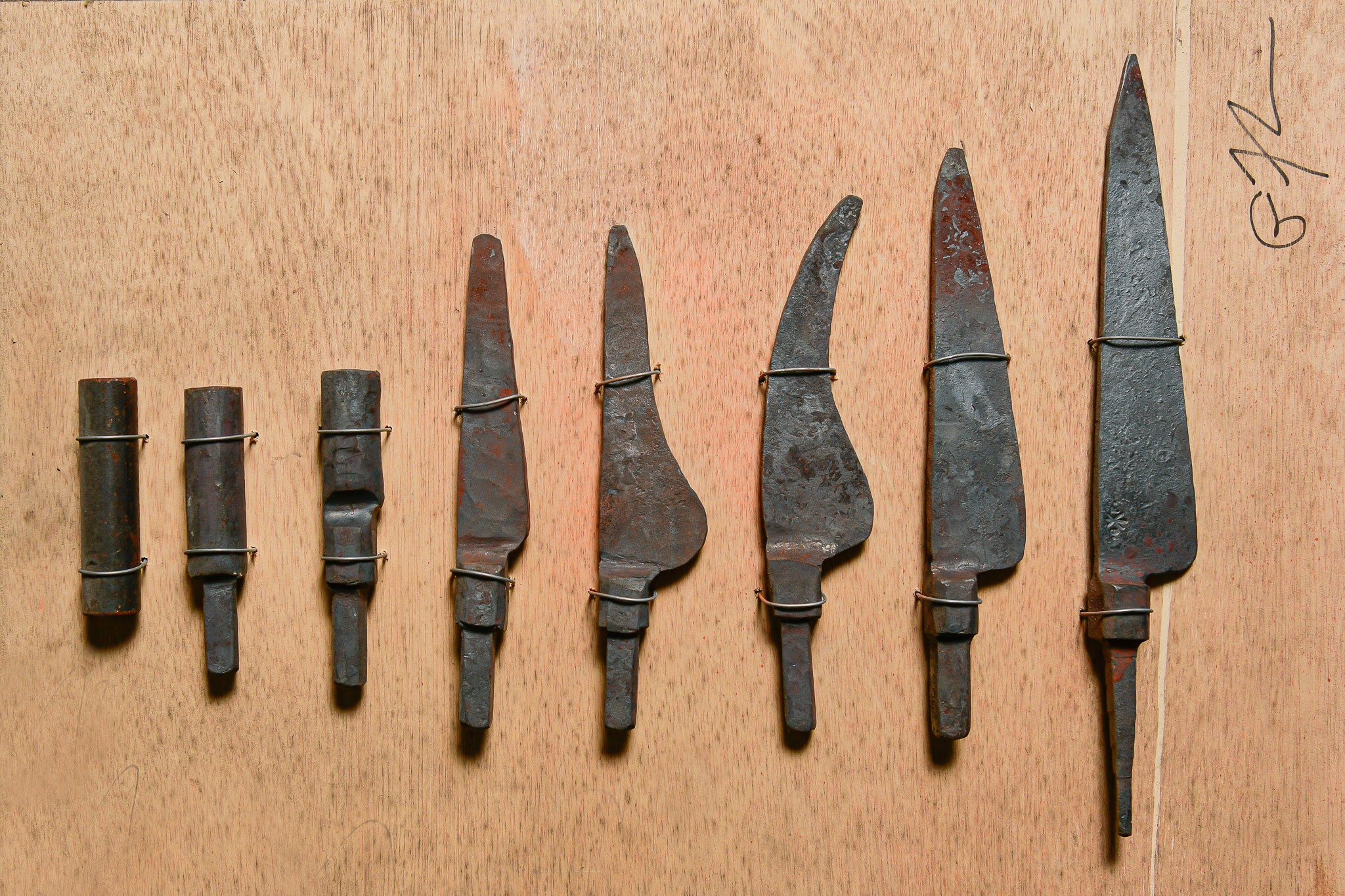
Hand Forged
This image shows the stages of our hand forging process for one of our Integral blades
The Metal
440-C is a widely used stainless steel in the cutlery industry. It is high carbon steel with added chromium which resists patina and rusting. Note - it's stain-LESS, not stain-NOT, so you're still going to want to keep it dry. This steel can also can achieve high levels of hardness so after you establish an edge it tends to stay put.
Stainless steel is only used for the "templated" knife making method.
PRO: easy to maintain
CON: a little more work to get an edge.
We use "1084" which is an awesome high carbon steel and a classic for use in knife making. It's a little softer than stainless which enables it to take a wicked sharp edge making it a favorite of culinary professionals. Due to its softness however the edge will need more maintenance depending on use (and your cutting board). Cutting foods with acid will also discolor the metal creating a patina which some people like and appreciate. A little abrasive scrub can bring it back to its original sheen. This metal lacks the corrosion resistance of stainless and any moisture left on the blade will begin to rust it way more quickly than you think is possible, but take care of it properly and you will have a kitchen compatriot for life. If considering a knife for a gift we tend to push people to select stainless because a carbon knife can be a little like getting someone a pet.
This steel is used for both the "templated" and "forged" knife making methods.
PRO: edge sharpness
CON: rusts easily
Two separate types of steel, high carbon and high nickel are alternated in a stack to form a billet. The billet is heated to 2300º and then "forge-welded" into a solid block under an incredible amount of force. Depending on the desired pattern, the billet can be twisted, cut, reforged and further manipulated to create a beautiful piece of swirly looking metal. At first it's difficult to see that pattern as it is only revealed by dipping the finished knife into ferric chloride acid. This process etches the high carbon steel and leaves the high nickel alone, revealing the pattern. The dark parts are the high carbon and the more silvery lines are the high nickel.
PRO - envious looks from all of your friends
CON - rusts easily
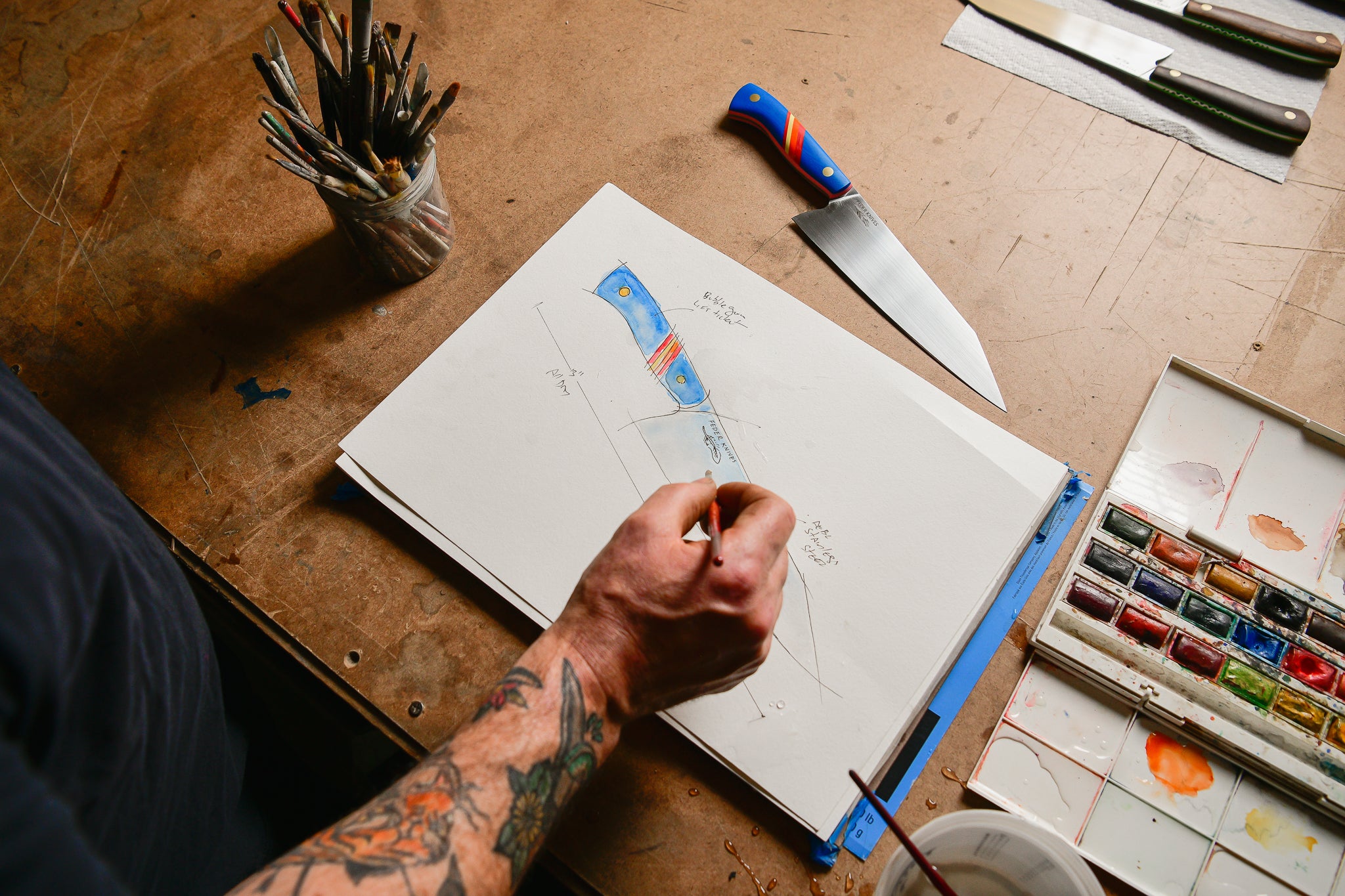
Custom designs
Be sure to grab a custom watercolor to go with your new knife.
Learn about the shape & style of your knife
The Profile
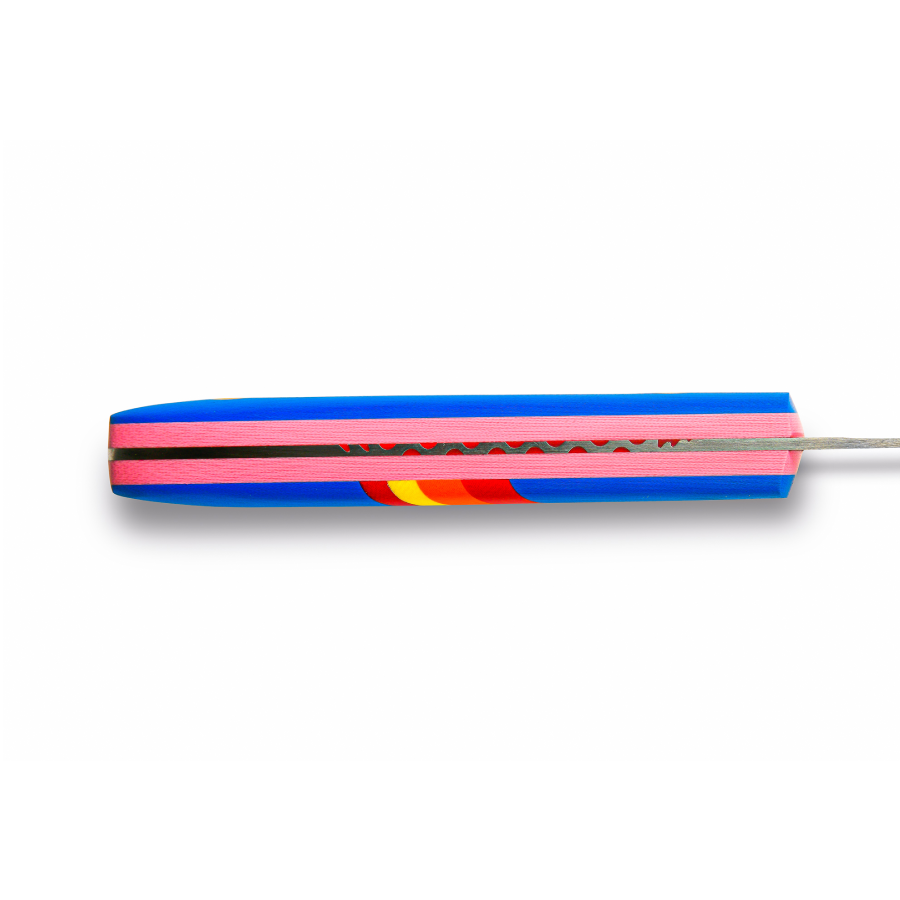
full tang kitchen knives
“Full Tang” means that the steel of the blade runs the entire length of the handle . For this style of knife the handle material, or “scales” are fastened on either side of the steel. This enables us to do the file work along the spine of the handle because the metal is exposed.
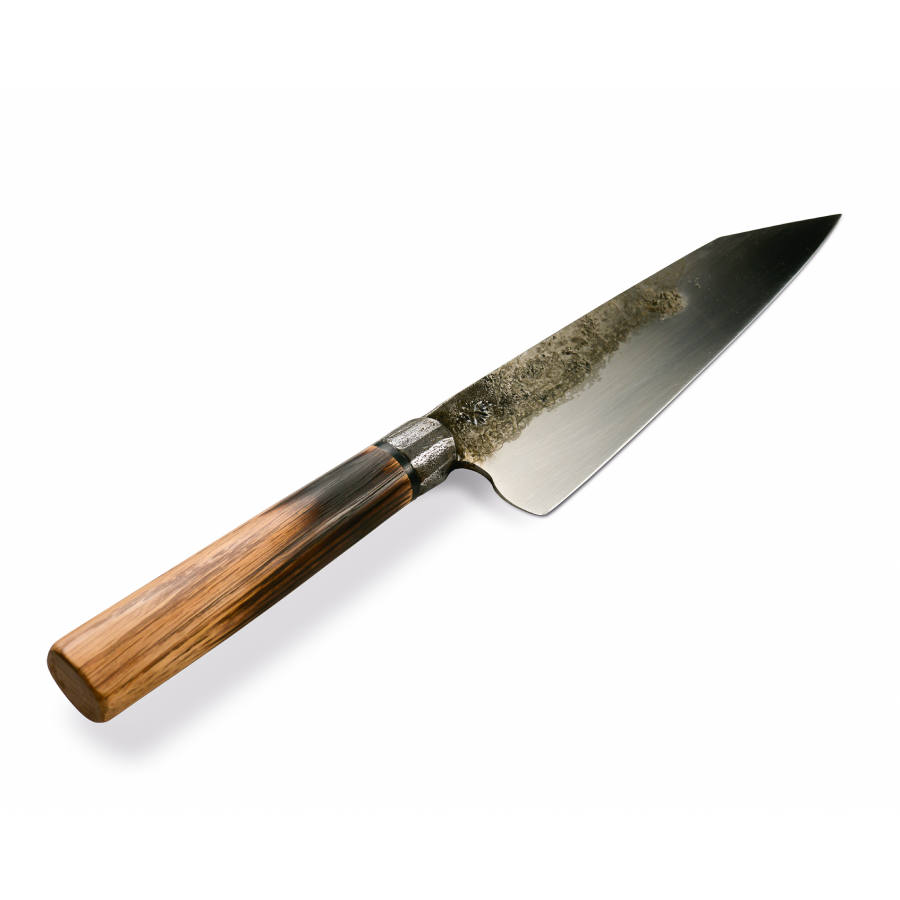
hidden tang
A hidden tang is a knife that has no part of the tang (the steel of the handle) visible. It's all encased and fits into the handle material. Forged and Damascus steel knives are almost always hidden tang.